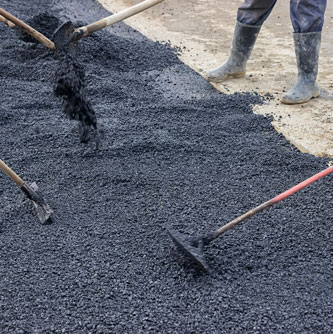
Asphalt Pothole Repairs
Potholes are created when moisture seeps into the pavement, gets cold, expands and then thaws. This weakens the pavement. Traffic loosens it even more, and it eventually crumbles and pops out.
Pothole repairs are performed by removing the damaged asphalt with a jackhammer or masonry saw to create a neat rectangle. When the excess asphalt is removed, an adhesive is applied and asphalt is added in layers. It is leveled off and compacted with a pavement roller.
Five Steps to Pothole Repair
Pothole Repair Failures
Here are some of the key reasons for pothole repair failures:

